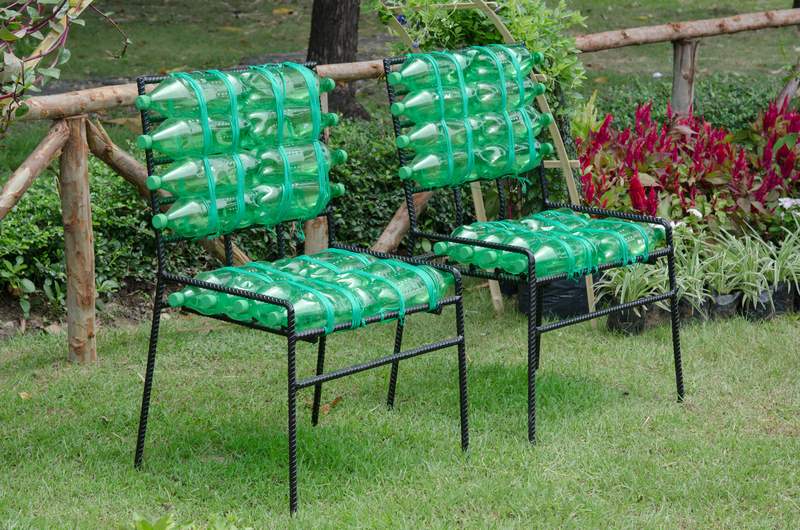The Do's and Don'ts of Throwing Away PPE Waste
PPE waste disposal has become a crucial part of our daily routine, especially after the global pandemic that introduced protective gear into everyday life. Whether it's for staff in a healthcare setting, essential workers, or the general public, understanding the proper method to throw away PPE is not only about personal safety--it's also a significant step in environmental conservation and public health. In this comprehensive guide, we'll walk you through the do's and don'ts of throwing away PPE waste, ensuring you're well-equipped to protect both people and the planet.
What is PPE Waste?
PPE, or Personal Protective Equipment, includes items like face masks, gloves, face shields, disposable gowns, and shoe covers. Once these items are used and discarded, they become PPE waste. This waste is potentially hazardous as it may carry infectious agents or contaminants.
Importance of Proper PPE Disposal
- Health & Safety: Incorrect disposal can spread pathogens, risking infection to sanitation workers and the community.
- Environmental Impact: PPE is often made from plastics and non-biodegradable materials, posing a significant pollution threat if not managed responsibly.
- Legal Compliance: Many regions have regulations regarding medical and hazardous waste disposal--including PPE waste management.
Understanding best practices when discarding used PPE protects your health, the public, and the environment.

The Essential Do's of PPE Waste Disposal
Let's start with what you should do when it comes to disposing of PPE waste. Follow these steps to minimize risk:
1. Use the Right Bins
- Designated PPE Waste Bins: Always look for specially marked bins labeled for "PPE waste" or "hazardous waste." These are typically lined with sturdy, leak-proof bags.
- Color Codes: Many facilities use colored bins (e.g., yellow for clinical waste) for easy identification.
2. Properly Contain PPE
- Bag It Securely: Place all used PPE into a strong, sealed plastic bag to prevent leaks or contact with other waste.
- Double Bag for Infected Items: If PPE was exposed to infectious material, double-bagging ensures extra containment.
3. Wash Hands After Handling
- Hand Hygiene: Always wash your hands thoroughly with soap and water or use hand sanitizer immediately after disposing of any PPE.
4. Follow Local Guidelines
- Know the Rules: Local authorities might have specific protocols for PPE waste management. Check their requirements regularly.
5. Educate Others
- Share Knowledge: Encourage friends, family, and colleagues to follow best practices in PPE waste disposal.
- Signage: Employers should display clear signage and provide training about PPE waste disposal best practices.
The Major Don'ts of Throwing Away PPE Waste
While it might be tempting to toss your used mask in the nearest bin, experts warn against these common errors:
1. Don't Mix PPE with General Waste
- Avoid Cross-Contamination: Mixing PPE in household trash increases risks for everyone handling the waste, especially sanitation workers.
2. Never Recycle Used PPE
- PPE is Non-Recyclable: Used gloves, masks, and other items are typically contaminated and do not belong in recycling bins.
- Contaminating Recycling Streams: Adding PPE to recycling can spoil entire batches, sending more materials to landfill.
3. Don't Litter
- Serious Pollution: Abandoning PPE in public spaces not only endangers wildlife but poses infection risks to others.
- Legal Ramifications: In some places, improper disposal (like littering masks) can result in fines.
4. Don't Flush PPE Down Toilets
- Blocked Sewers: Flushing masks, gloves, or wipes can block pipelines and lead to costly repairs and environmental pollution.
- Water contamination: Inadequately disposed PPE can end up in waterways, disrupting ecosystems.
5. Don't Handle PPE Waste Bare-Handed
- Personal Protection: Always wear gloves when handling used PPE from others, particularly in public or workplace settings.
Types of PPE and How to Dispose of Them Safely
There are different categories of Personal Protective Equipment. Here's how to safely discard the most common types:
Masks (Surgical, N95, Cloth)
- Surgical/N95 Masks: Treat as potentially infectious. Place in a sealed bag and deposit in designated PPE waste bins.
- Cloth Masks: Washable and reusable. Only discard if severely damaged, following general hygiene waste guidelines.
Gloves (Latex, Nitrile, Vinyl)
- Never recycle. Dispose of gloves in marked PPE or hazardous waste bins.
- Avoid touching personal items or face after glove removal, and wash hands afterwards.
Face Shields & Goggles
- If reusable, clean and disinfect after use.
- If disposable, discard via appropriate hazardous or PPE-specific bins.
Gowns & Shoe Covers
- Disposable Items: Carefully remove, avoid shaking, and place in sealed bags for proper disposal.
- Reusable Items: Launder at high temperatures separately from other clothing.
Where Does PPE Waste Go?
Understanding the journey of PPE waste after disposal can help underscore why following guidelines is so important. Once you discard PPE using approved methods:
- PPE in healthcare settings is often considered clinical waste and goes to licensed incineration or deep landfill.
- Some municipal systems have dedicated routes for infectious or hazardous waste collection.
- Certain specialized companies now offer PPE recycling for uncontaminated personal protective equipment via chemical or mechanical processes.
Tips for Reducing PPE Waste
- Use reusable PPE where safe. Cloth masks and washable gowns significantly reduce single-use waste.
- Buy only what you need; stockpiling can lead to unnecessary waste from expired products.
- Choose eco-friendly PPE when available, such as biodegradable masks or gloves.
Health and Environmental Risks of Improper PPE Waste Disposal
Incorrectly discarding PPE not only increases health hazards but also has dire environmental consequences:
- Public Health Threats: Unprotected waste increases the risk that infectious agents will spread in communities and workplaces.
- Air and Soil Pollution: Incineration of plastic-based PPE can emit harmful chemicals if not managed correctly.
- Marine Life Endangerment: Discarded masks and gloves are increasingly found in rivers and oceans, harming aquatic animals that may ingest or become entangled.
PPE Waste Management in the Home vs. Healthcare Settings
It's essential to distinguish between the two main environments where PPE is frequently used:
At Home
- Designate a specific bin or bag for collecting used PPE.
- Do not mix with recyclables or compostable waste.
- In case of known infection in the household, double-bag and follow local authority guidance for quarantined waste.
In Healthcare or Workplaces
- Strict adherence to infection prevention protocols is required.
- PPE must never be disposed of with regular office or kitchen trash.
- Employers should provide training and PPE waste supplies for staff.
Common Myths About PPE Waste Disposal
- Myth: Masks and gloves can go in the recycling.
Fact: Most recyclers do not process them due to contamination risk. - Myth: Littered PPE will decompose quickly.
Fact: Plastic PPE can persist in the environment for decades. - Myth: PPE thrown in regular trash is safe enough.
Fact: Improper disposal exposes many people to unnecessary hazards.

Frequently Asked Questions (FAQ): PPE Waste Disposal Guide
How should I dispose of PPE if I'm caring for someone with COVID-19?
Double-bag all used PPE in plastic before placing it in your usual waste bin. Wait 72 hours before putting the waste out for collection if possible, and always where possible, follow local health authority guidelines.
Can single-use masks and gloves be recycled?
No, do not recycle single-use PPE. They contaminate recycling streams and are not designed for standard material recovery facilities.
What should I do if I see PPE litter on the street?
If you feel safe and are equipped with gloves and sanitizer, you can pick up the waste, bag it securely, and place it in a designated waste bin. Otherwise, report litter to local authorities for proper cleaning.
Conclusion: Champion Safe and Responsible PPE Disposal
PPE has protected millions of people worldwide. However, that protective benefit extends only as far as our responsible actions in disposing of PPE waste. By following the do's--using the right bins, securing waste, and practicing hygiene--and avoiding the major don'ts--mixing with regular or recyclable waste, littering, or flushing--you safeguard not only your community's health but also the environment at large.
Remember: Always check with your local municipality or health authority for the most up-to-date PPE waste disposal procedures, and join the movement towards safer, greener PPE waste management in your community.
Let's put our protective habits to work all the way down the line--from use, to thoughtful, responsible disposal.
